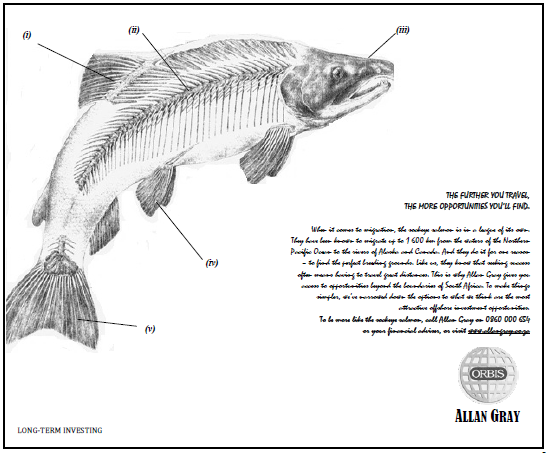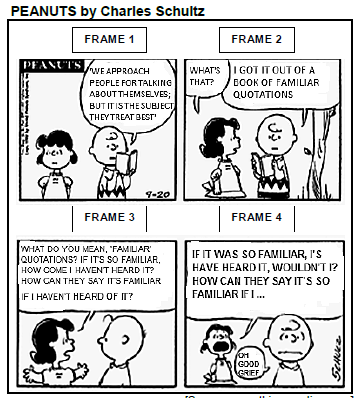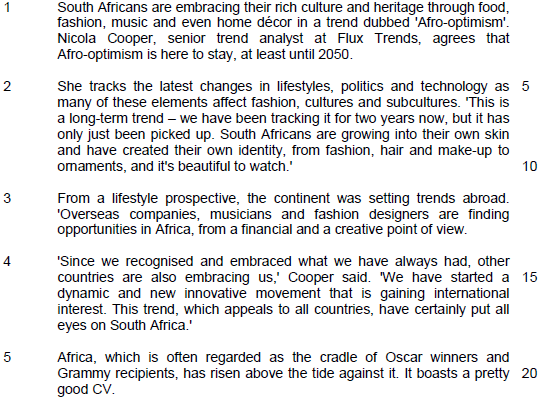ENGLISH HOME LANGUAGE PAPER 1 GRADE 12 QUESTIONS - NSC PAST PAPERS AND MEMOS FEBRUARY/MARCH 2016
Share via Whatsapp Join our WhatsApp Group Join our Telegram GroupENGLISH HOME LANGUAGE P1
FEBRUARY/MARCH 2016
NATIONAL SENIOR CERTIFICATE
GRADE 12
INSTRUCTIONS AND INFORMATION
- This question paper consists of THREE sections:
SECTION A: Comprehension (30 marks)
SECTION B: Summary (10 marks)
SECTION C: Language in context (30 marks) - Read ALL the instructions carefully.
- Answer ALL the questions.
- Start EACH section on a NEW page.
- Rule off after each section.
- Number the answers correctly according to the numbering system used in this question paper.
- Leave a line after each answer.
- Pay special attention to spelling and sentence construction.
- Use the following time frames as a guideline:
SECTION A: 50 minutes
SECTION B: 30 minutes
SECTION C: 40 minutes - Write neatly and legibly.
SECTION A: COMPREHENSION
QUESTION 1 : READING FOR MEANING AND UNDERSTANDING
Read TEXTS A and B below and answer the set questions
TEXT A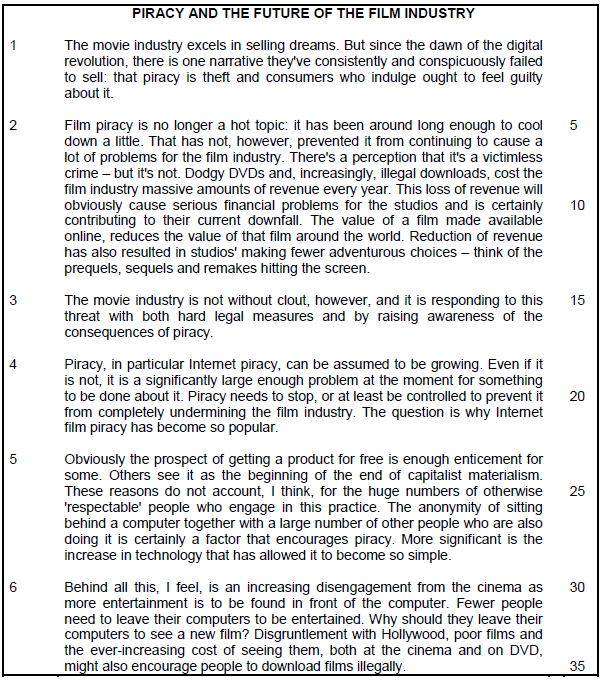
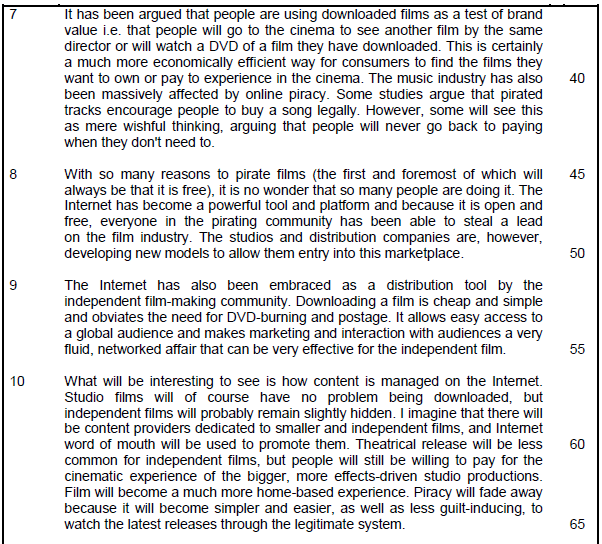
TEXT B
QUESTIONS: TEXT A
1.1 State, in your own words, what the writer conveys about the 'digital revolution' in paragraph 1. (2)
1.2 Explain the significance of the claim, 'There's a perception that it's a victimless crime' (lines 7–8).(2)
1.3 Refer to lines 8–14: 'Dodgy DVDs and ... hitting the screen.'
Suggest a reason for studios' opting for 'fewer adventurous choices' (line 13). (2)
1.4Discuss the implications of the use of inverted commas around 'respectable' (line 26). (2)
1.5 Comment on the effects of the diction used in paragraph 3. (3)
1.6 In your view, is the statement, 'Disgruntlement with Hollywood ... download films illegally' (line 33–35), self-contradictory? Substantiate your response. (3)
1.7 Discuss the appropriateness of the use of 'steal a lead on' (line 48–49). (3)
1.8Considering Text A as a whole, do you agree with the writer's concluding sentence: 'Piracy will fade away because it will become simpler and easier, as well as less guilt-inducing, to watch the latest releases through the legitimate system' (lines 64–65)? Justify your response. (3)
1.9 Account for the boy's body language in frame 2. (2)
1.10 Comment on the role of the mother in the cartoon. (2)
1.11 Critically evaluate the boy's response, 'THAT'S PIRACY!' (3)
QUESTION: TEXTS A AND B
1.12 Does Text B support the writer's argument in Paragraph 5 of Text A? Substantiate your view. (3)
TOTAL SECTION A: 30
QUESTIONS: TEXT B
SECTION B: SUMMARY
QUESTION 2: SUMMARISING IN YOUR OWN WORDS
TEXT C highlights the importance of colour. Summarise in your own words what it says about the effects of colour in our lives.
NOTE:
- Your summary should include 7 points and NOT exceed 90 words.
- You must write a fluent paragraph.
- You are NOT required to include a title for the summary.
- Indicate your word count at the end of your summary.
TEXT C
A RAINBOW OF HUES Colour is a universal language and a healing tool that can be used to identify and correct imbalances in our lives. Colour therapy is an alternative treatment. It was used thousands of years ago by ancient Greek and Egyptian civilisations. Today, the use of colour therapy has been revived and is gaining popularity all over the world. The effect of colour on our bodies has a scientific foundation. Scientists discovered that the rays of each colour have different and specific vibrations which we absorb as we come into contact with certain colours. |
TOTAL SECTION B: 10
SECTION C: LANGUAGE IN CONTEXT
QUESTION 3: ANALYSING ADVERTISING
Study the advertisement (TEXT D) below and answer the set questions.
TEXT D
The text in small font reads as follows:
| THE FURTHER YOU TRAVEL, THE MORE OPPORTUNITIES YOU’LL FIND. When it comes to migration, the sockeye salmon is in a league of its own. They have been known to migrate up to 1 600 km from the waters of the Northern Pacific Ocean to the rivers of Alaska and Canada. And they do it for one reason – to find the perfect breeding grounds. Like us, they know that seeking success often means having to travel great distances. This is why Allan Gray gives you access to opportunities beyond the boundaries of South Africa. To make things simpler, we’ve narrowed down the options to what we think are the most attractive offshore investment opportunities. To be more like the sockeye salmon, call Allan Gray on 0860 000 654 or your financial adviser, or visit www.allangray.co.za |
QUESTIONS: TEXT D
3.1 Account for the use of the phrase, 'in a league of its own'. (2)
3.2 Discuss why the advertiser mentions that the salmon has 'been known to migrate up to 1 600 km'? (2)
3.3 Comment critically on the advertiser's use of the personal pronouns, 'we', 'you' and 'us' in the context of the advertisement. (3)
3.4 In your view, does the visual portrayal of the fish support the advertiser's message? Justify your response. (3) [10]
QUESTION 4: UNDERSTANDING OTHER ASPECTS OF THE MEDIA
Study TEXT E and TEXT F and answer the set questions.
TEXT E: CARTOON
QUESTION: TEXT E
4.1 Account for the change in the boy's attitude. (2)
4.2 Comment on how humour is created in this cartoon. (3)
TEXT F: CARTOON
QUESTIONS: TEXT F
4.3 Refer to frame 4.
What do the boy's facial expression and words, 'OH! GOOD GRIEF!' reveal about him? (2)
4.4 Refer to frames 3 and 4.
Discuss any TWO techniques used by the cartoonist to comment on the girl's character. (3) [10]
QUESTION 5: USING LANGUAGE CORRECTLY
Read TEXT G, which contains some deliberate errors, and answer the set questions.
TEXT G
RISE OF AFRO-OPTIMISM |
QUESTIONS: TEXT G
5.1 Give an antonym for 'Afro-optimism' (line 2). (1)
5.2Rewrite the following clause in the passive voice:
'She tracks the latest changes in lifestyles, politics and technology' (line 5). (1)
5.3 What is the function of the dash in line 7? (1)
5.4 To which noun does the pronoun 'it' refer in the clause,'but it has only just been picked up' (lines 7–8)? (1)
5.5 Provide the adverbial form of 'ornaments' (line 10).
5.6 Correct the malapropism in paragraph 3. (1)
5.7 'Since we recognised and embraced what we have always had, other countries are also embracing us,' Cooper said (lines 14–15).
Correct the tense error in this sentence. (1)
5.8 'We have started a dynamic and new innovative movement that is gaining international interest' (lines 15–17).
Remove the redundancy in the above sentence.(1)
5.9 Correct the concord error in paragraph 4. (1)
5.10 Choose the correct answer from the options provided. Write down only the letter of your choice.
'Africa, which is often regarded as the cradle of Oscar winners and Grammy recipients, has risen above the tide against it' (lines 19–20).
The above sentence is an example of ...
- a clause.
- a complex sentence.
- a simple sentence.
- a compound sentence. (1) [10]
TOTAL SECTION C: 30
GRAND TOTAL: 70

